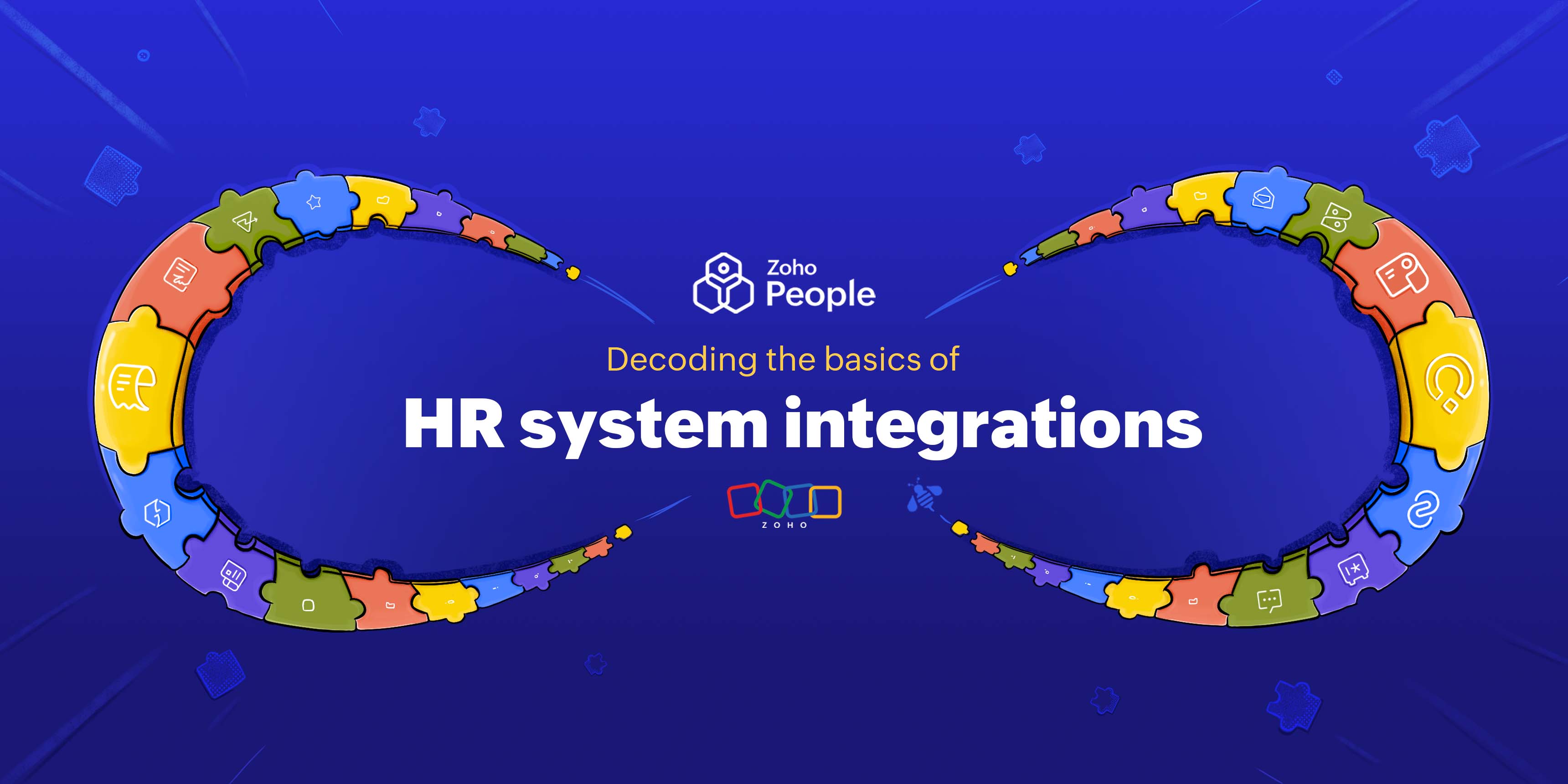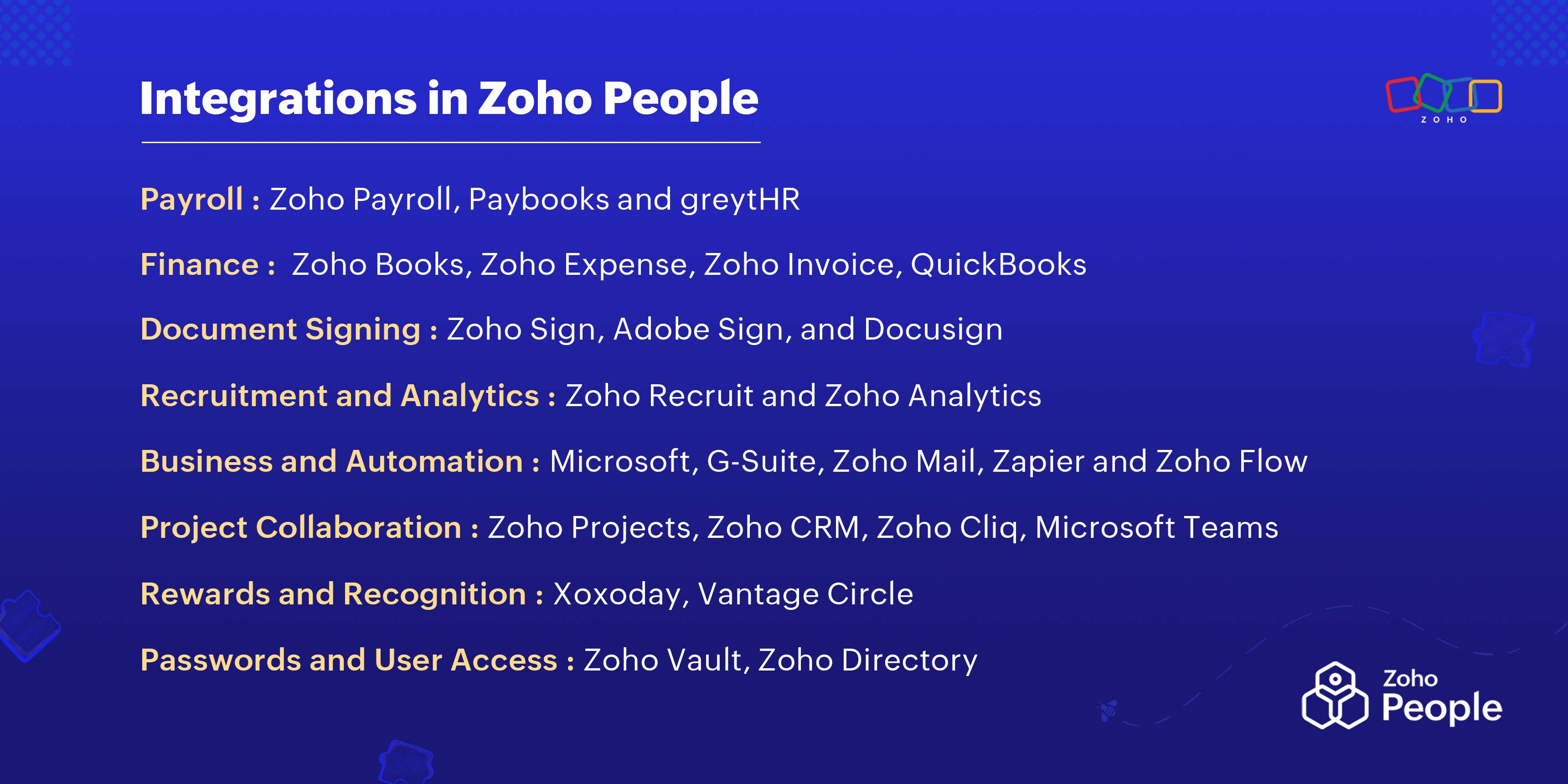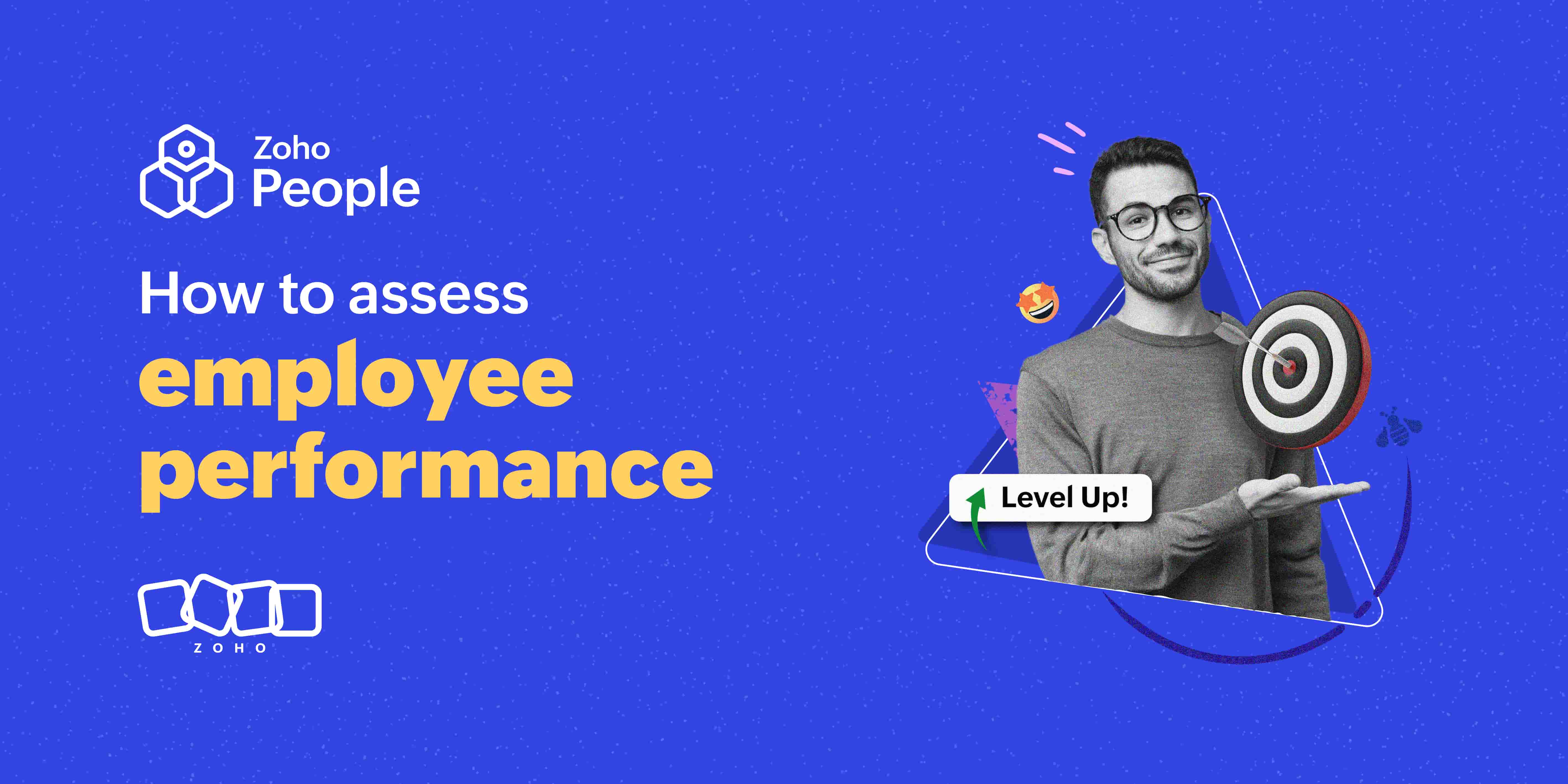- HOME
- HR insights
- HR system integrations: What it is, benefits, types and different integrations in Zoho People
HR system integrations: What it is, benefits, types and different integrations in Zoho People
- Last Updated : May 7, 2025
- 956 Views
- 6 Min Read

Over the years, HR departments have emerged as crucial elements of organizations. As businesses grow and scale, HR reps' roles have extended beyond onboarding, payroll, and compliance; they're also responsible for employee well-being, engagement, and development. At the same time, many core HR practices have traditionally been handled in spreadsheets, which required manual data entry, duplicated records, and necessitated endless searches for important details.
On the other hand, using multiple applications at once can be exhausting and make it difficult to maintain accuracy and efficiency. Tracking employee information across various platforms can be both time-consuming and error-prone, and the lack of synchronization has made it difficult for HR departments to gain clear insights.
The solution to both of these problems is the integration of different HR systems.
What is an HR system integration?
HR system integration is the process of combining two or more HR applications in a centralized platform where HR professionals can synchronize and manage employee data across various business functions, including payroll, applicant tracking, performance management, learning management, and more.
Organizations can eliminate the constant need to switch between tools and reduce the risk of administrative oversights and errors by integrating their HR systems.
Benefits of an HR integration
With an integrated human resource management system, employers can accomplish their day-to-day operations with ease. Below are some of the benefits:
Improved data accuracy
Maintaining data accuracy is a critical function in HR. If you're migrating employee data from one HR software tool to another, doing it manually is both time-consuming and error-prone, but in an integrated system where data only needs to be entered once and is automatically updated across all integrated systems, there are fewer opportunities for errors. This reduces the risk of inconsistencies and ensures that data is accurate and up to date.
Efficiency and accessibility
With all employee data in one place, it's easy to synchronize and gather information. When searching for an employee, data across various applications can be messy. By gathering the information in a centralized platform, you can derive insights quickly and thereby enable yourself and other HR team members to focus on other initiatives.
Better decision-making
Integrating HRMS software into centralized employee management platforms (like analytics, payroll, recruit, and etc) provides a vast range of information from which HR teams can derive gain insights on employee performance, engagement, and overall workforce status. This enables HR managers to make informed decisions and craft policies that align with the organization's culture.
Different types of integrated HR systems
HR integrations can take many forms depending on the needs of your organization, the complexity of your HR processes, and the systems you use. Here's a breakdown of some common types:
API integration
API integrations are one of the most frequently used methods in human resources system integrations. An API enables different software systems to communicate by exchanging data in real time.
Pre-built integration
Pre-built integrations are out-of-the-box solutions that HR software vendors provide. They're designed to work with specific third-party applications, making it easy to connect these platforms without needing significant technical expertise.
Custom integration
Custom integrations are built to meet an organization's specific needs, usually when there's nothing available in the market in the form of a pre-built or API integration. Custom integrations enable companies to build nearly frictionless workflows that meet their needs, though they generally require more time, technical expense, and financial investment.
Cloud-based integration
As the use of cloud-based HR systems has increased, cloud-based integrations are used to integrate various cloud services (or cloud and on-premise systems) so that data can be shared securely and efficiently. Such integrations help HR teams ensure that all employee-related data can be accessed from anywhere, thereby improving inter-team collaboration as well.
File-based integration
File-based integrations exchange data between systems by using files with specific formats, such as CSV, XML, or JSON. The integration, in this case, mainly applies to older legacy systems or when the exchange of real-time data isn't necessary.
How can HR teams facilitate HR system integrations?
Human resource system integrations run smoothly when planned well, executed collaboratively, and done with the right tools.
Here are some of the things that the HR teams should consider.
Evaluate organizational needs
Before beginning the integration, HR must evaluate which systems need to be integrated together so they can determine how the integration will improve HR functions.
Involve IT
Collaborating with the IT department is essential so that the technical side of the integration process goes smoothly.
Test the integration
Proper testing ensures that the fully integrated systems work as expected and that there's no data leakage between them. HR teams should be trained to make use of new integrated systems effectively to maximize the acquired benefits.
Different integrations in Zoho People
Zoho People integrates with a wide range of solution that support all aspects of HR management. These integrations help organizations streamline all HR processes efficiently.

Recruitment and analytics
To enable the flow of recruitment data and analytical reports, Zoho People integrates with Zoho Recruit and Zoho Analytics to make it easy for HR teams to track recruitment metrics like applicants onboarded, time-to-hire, and offer acceptance rate. It also enables HR professionals to dig deeper into data to assess trends in hiring, monitor recruitment and KPIs, and generate reports.
Payroll
The payroll integration in Zoho People ensures that employee salary data is synced across platforms correctly. This integration mechanizes all kinds of payroll calculations, tax deductions, and statutory compliance to minimize the risk of error. Easy payments with integrations from Zoho People with other systems like Paybooks, Zoho Payroll, and greytHR makes these processes faster and less error-prone.
Document signing
The integration of e-signature technology enables HR teams to manage contracts, offer letters, and other legal documents efficiently. They can acquire employees' signatures electronically safely and in compliance with privacy regulations, which is particularly beneficial in minimizing paperwork and improving workflows using tools like Zoho Sign, Adobe Sign, and Docusign.
Project collaboration
Communication is key when collaborating with others. In order to offer seamless collaboration across departments, Zoho People has integrated with a range of products. For instance, through Zoho Projects, it's possible to track major project milestones and how much work each employee has delivered. Companies can efficiently manage employee-customer interactions via Zoho CRM. Additionally, companies can enable real-time messaging and collaboration through communication tools like Zoho Cliq or Microsoft Teams to keep everyone in sync.
Finance
With the integration of QuickBooks and Zoho Books, or Zoho Expense and Zoho Invoice, one can manage employee expense tracking and payroll processes effortlessly. It also simplifies accounting by synchronizing payroll expense checks and vendor payments for reimbursements and invoices in one place.
Business and automation
Integrating with business automation tools like Microsoft and G-suite can introduce productivity and communication tools to Zoho People. Organizations can rely on Zoho Mail to achieve secure communications, and they can use Zapier or Zoho Flow to automate workflows between different applications, whereby HR professionals can define certain conditions and trigger a set of actions to be performed automatically, which can save time and reduce manual work.
Rewards and recognition
The most basic driver of employee engagement and productivity in modern organizations is often known as employee recognition. Using Zoho People in tandem with Xoxoday or Vantage Circle, HR teams tend to encourage their staff using reward and recognition programs. These integrations help to maintain reward point systems and award redemption processes while uniting all these transactions in one place.
Passwords and user access
Data security is a necessity in all HR processes. Zoho Vault deals with user access management and ensures data security. Zoho Directory enables centralized management of user roles and permissions while securely storing and managing employee passwords within Zoho Vault. Accordingly, these tools enhance professionalism in dealing with sensitive information.
Helpful Links: |
Wrapping up
Organizations with unconsolidated processes—from payroll and recruitment to performance management—are increasingly realizing that HR functions are vastly more efficient with streamlined work processes, improved accuracy, and better decision-making. With the help of tools like Zoho People, companies can minimize administrative challenges and give HR reps more time to spend on strategic initiatives. Embracing the integration of HR systems is key to maintaining your organization's efficiency and productivity.


